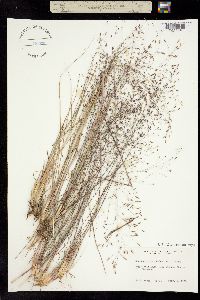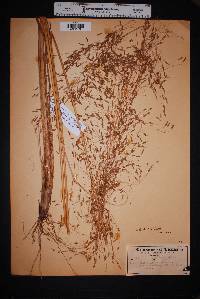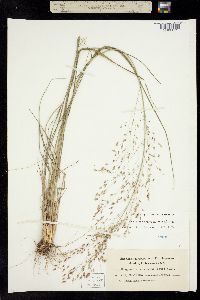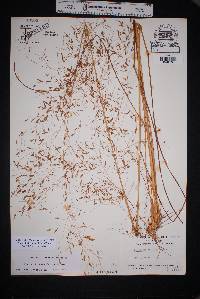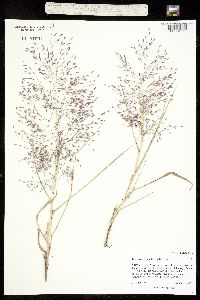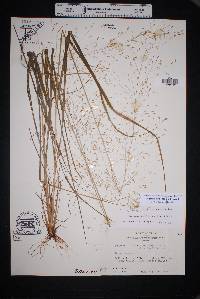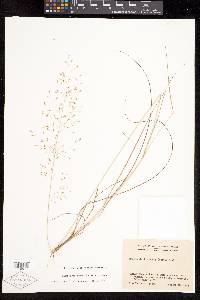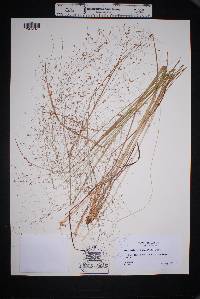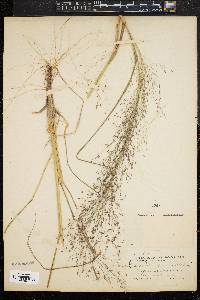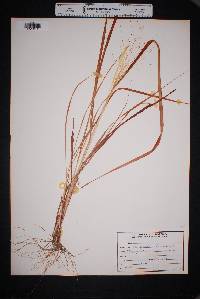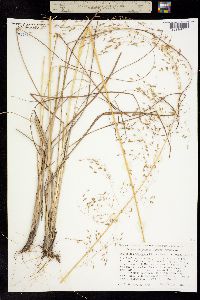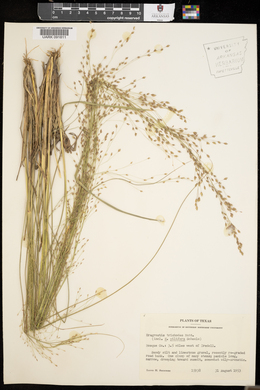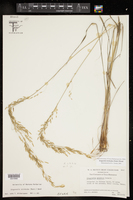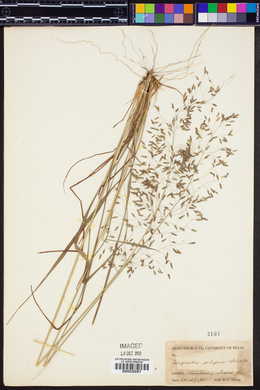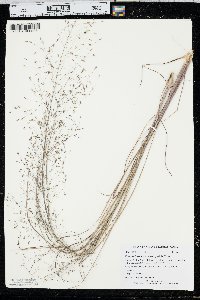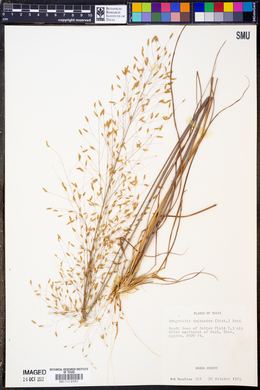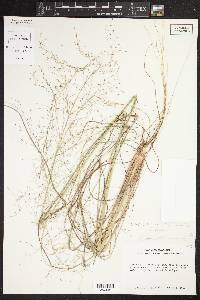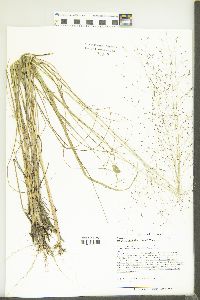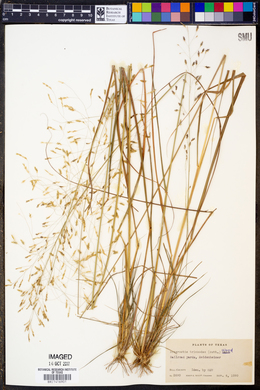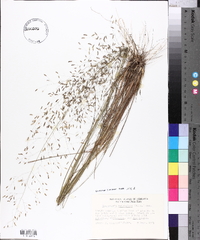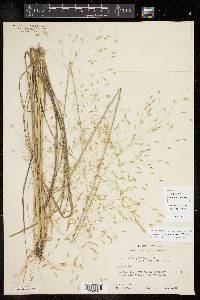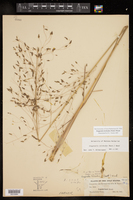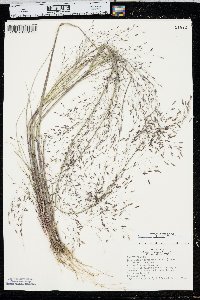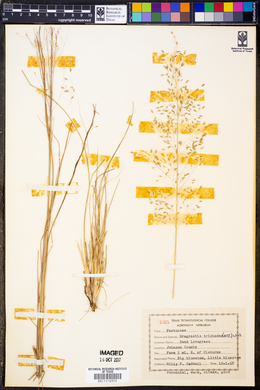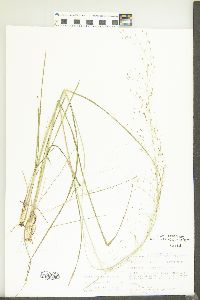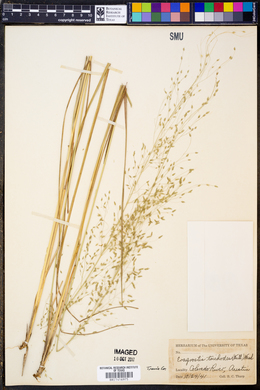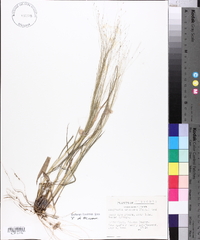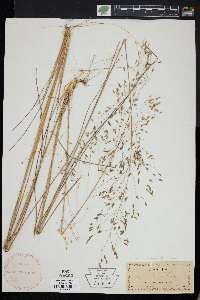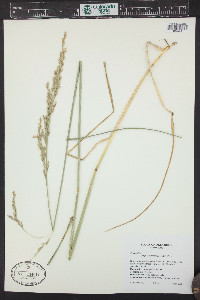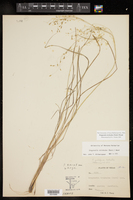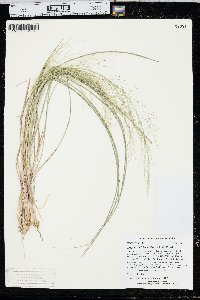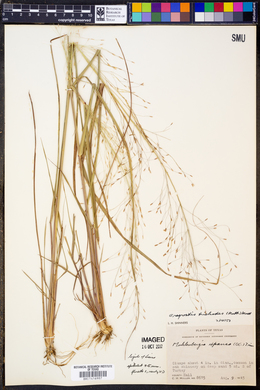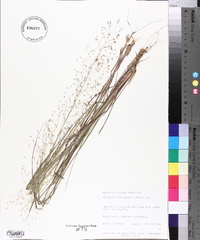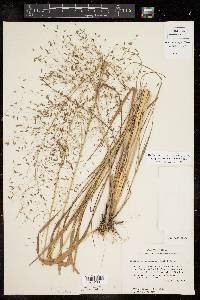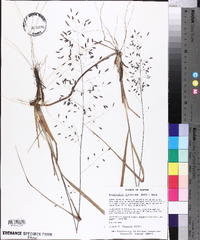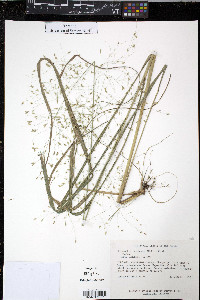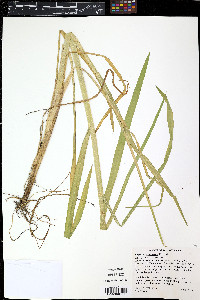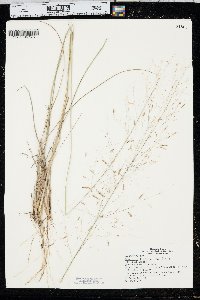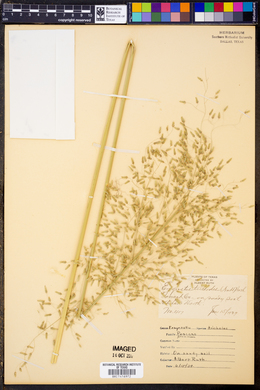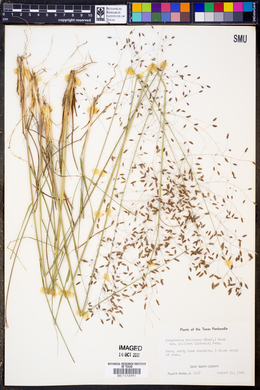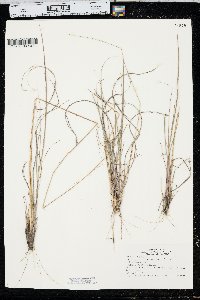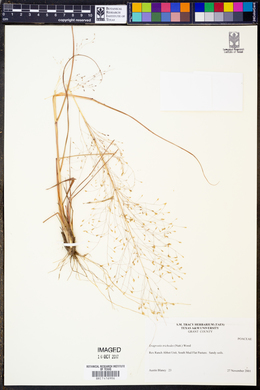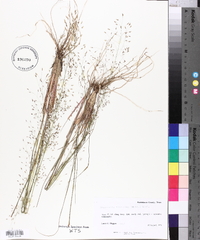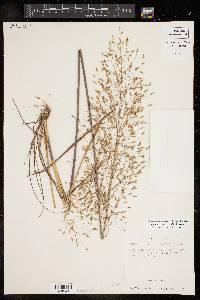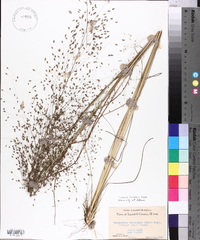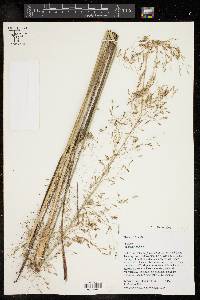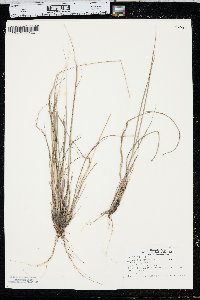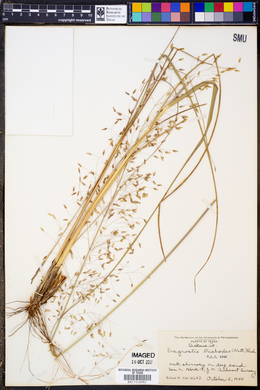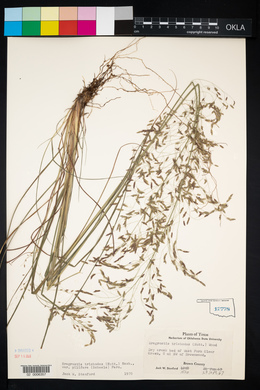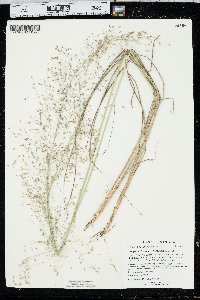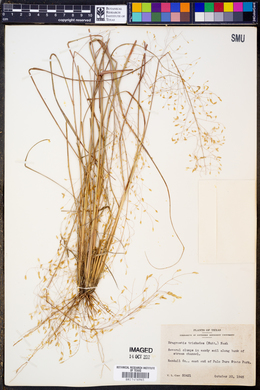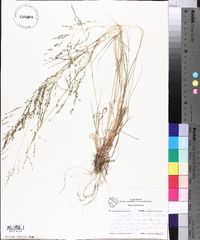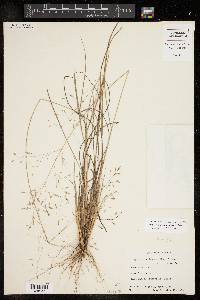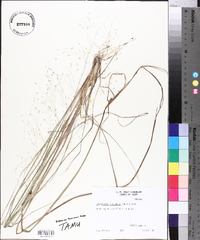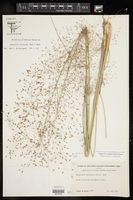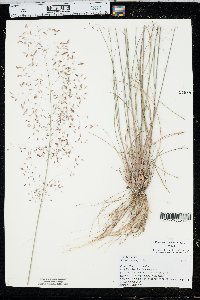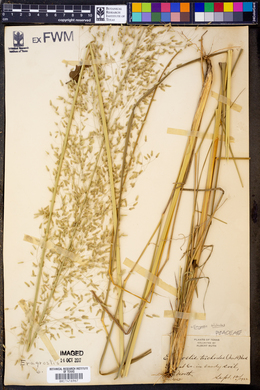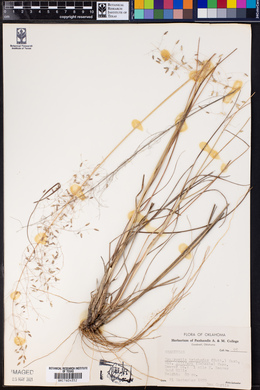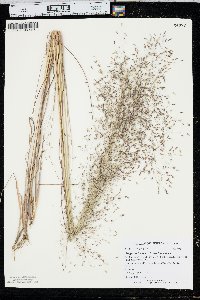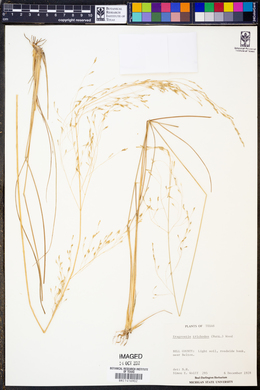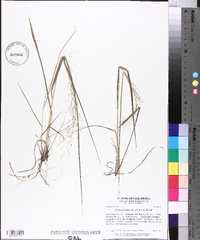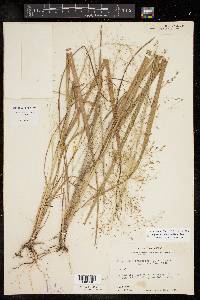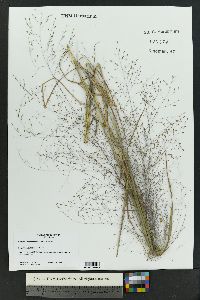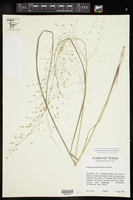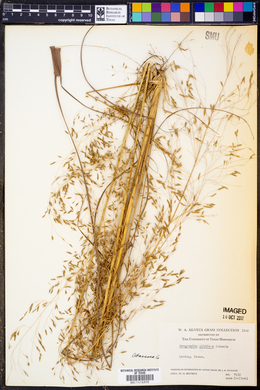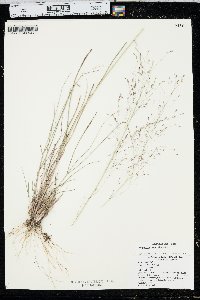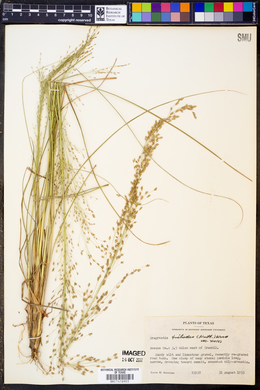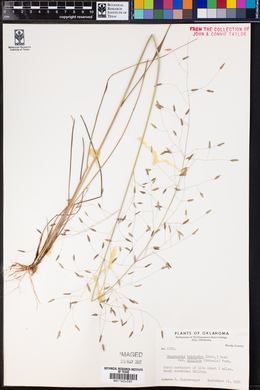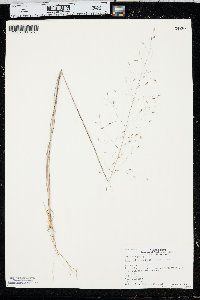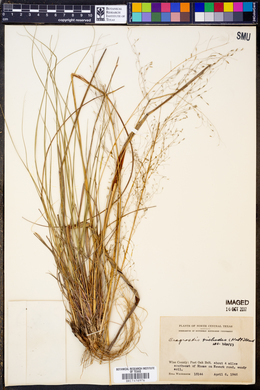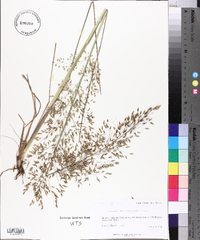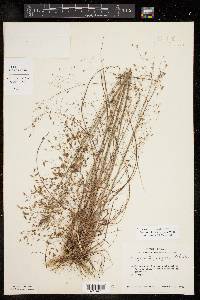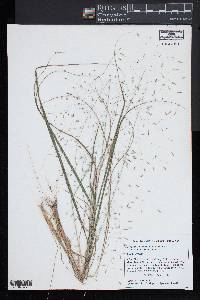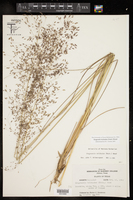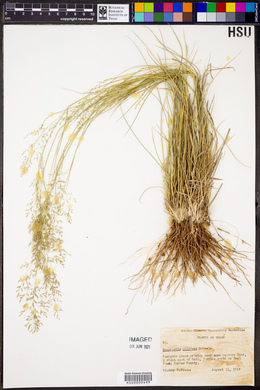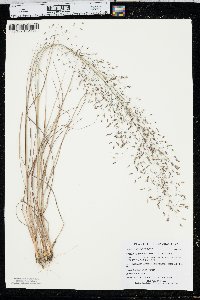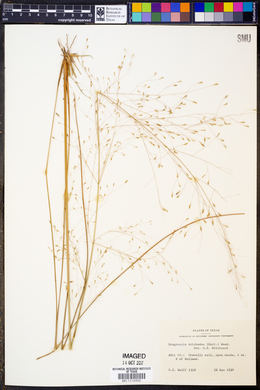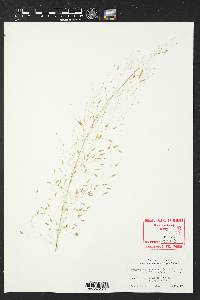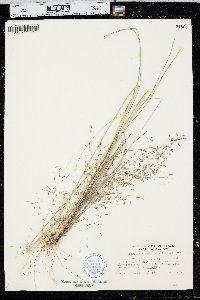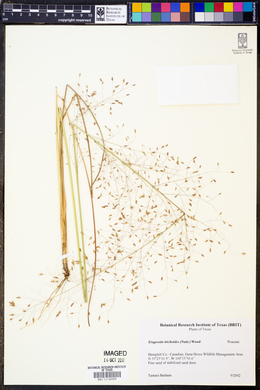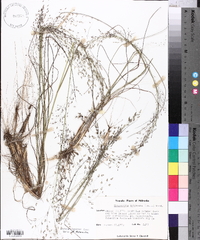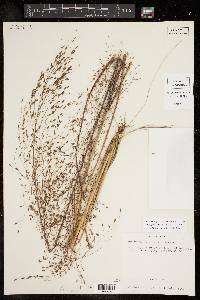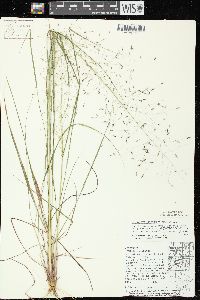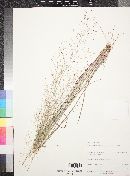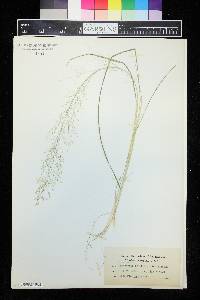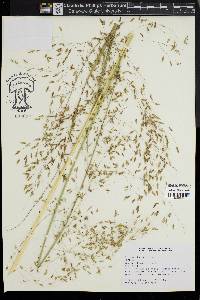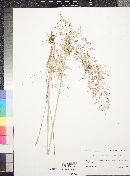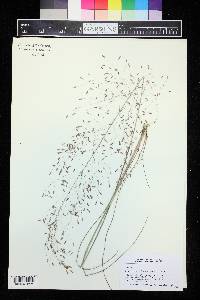Eragrostis trichodes
|
|
|
|
Family: Poaceae
Sand Love Grass, more...sand lovegrass
[Eragrostis capillacea, moreEragrostis grandiflora J.G. Sm. & Bush, Eragrostis pilifera Scheele, Eragrostis tenuis , Eragrostis tenuis var. texensis Vasey, Eragrostis trichodes var. pilifera (Scheele) Fern., Eragrostis trichodes var. trichodes (Nutt.) Alph. Wood, Poa trichodes Nutt.] |
Plants perennial; cespitose, with innovations, without rhizomes, not glandular. Culms 30-120(160) cm, erect, glabrous and non-glandular below the nodes. Sheaths sometimes villous along the margins, apices hairy, hairs to 5 mm; ligules 0.3-0.5 mm; blades 15-46(65) cm long, 1.5-8 mm wide, flat to involute, abaxial surfaces glabrous, adaxial surfaces scabridulous, sometimes also pilose on the basal 1/4, hairs to 4 mm. Panicles 30-80 cm long, 6-30 cm wide, oblong to ovoid, diffuse; primary branches 2-35 cm, diverging 20-90° from the rachises, naked basally; pulvini hairy or glabrous; pedicels 2-22 cm, diverging, capillary. Spikelets 3-15 mm long, 1.5-3.6 mm wide, ovate to lanceolate, greenish-yellow with a reddish-purple tinge, with (2)4-18 florets; disarticulation acropetal, paleas persistent. Glumes subequal, 1.8-4 mm, narrowly ovate to linear-lanceolate, membranous, apices acuminate; upper glumes as long as or longer than the basal lemmas; lemmas 2.2-3.5 mm, broadly ovate to lanceolate, membranous, strongly keeled, keels not glandular, lateral veins conspicuous, apices acute; paleas 1.8-2.8 mm, hyaline, narrower than the lemmas, keels ciliolate, apices obtuse to truncate; anthers 3, 1-1.6 mm, purplish. Caryopses 0.8-1.3 mm, rectangular-prismatic, somewhat laterally compressed, with a wide, deep adaxial groove, faintly striate, opaque, dark reddish-brown. 2n = 40. Eragrostis trichodes grows in sandy to gravelly prairies, open sandy woods, rocky slopes, and roadsides, at 100-2150 m, often in associations with Quercus marilandica, Q. stellata, Juniperus, and Redfieldia flexuosa. It is endemic to the contiguous United States, and is available commercially as an ornamental. Records from outside the primary range probably reflect introductions. Perennial tufted herb with offshoots from stem 30 cm - 2.4 m tall Leaves: with open sheaths that have hairy (to 5 m long) tips and are sometimes long-haired along the margins, and ligules that are 0.3 - 0.5 mm long. The blades are 15 cm - 0.65 m long, 1.5 - 8 mm wide, flat or with margins rolling toward the upper surface of the midvein (involute), hairless beneath, minutely rough above and sometimes hairy (to 4 mm long) on the lowest quarter. Inflorescence: terminal, branched (panicle), rising above upper leaves, 30 cm to 0.8 m long, 6 - 30 cm wide, oblong to egg-shaped, with 2 - 35 cm long primary branches. Fruit: an opaque, dark reddish brown caryopsis, 0.8 - 1.3 mm long, rectangle-faced (prism-like) with flat ends, somewhat laterally compressed, lightly longitudinally lined with a deep groove on one side. Culm: 30 cm - 1.6 m long, erect, hairless, lacking glands below the nodes. Spikelets: on a 2 - 22 cm long stalk, greenish-yellow with a hint of reddish purple, 3 - 15 mm long, 1.5 - 3.6 mm wide, egg-shaped to lance-shaped, laterally compressed. Glumes: nearly equal with upper glume usually slightly longer, 1.8 - 4 mm long, narrow egg-shaped to narrow lance-shaped and tapering to a pointed tip, membranous, single-veined, neither lobed nor awned. Florets: two to eight per spikelet, with three purplish anthers 1 - 1.6 mm long. Lemma: 2.2 - 3.5 mm long, broad egg-shaped to lance-shaped with a pointed tip, membranous, usually hairless, with longitudinal ridges lacking glands and conspicuous lateral veins. Palea: 1.8 - 2.8 mm long, narrower than the lemma, transparent, with a blunt to squared tip and two longitudinal ridges that are hairy along the margins. Similar species: Eragrostis spectabilis is the only other perennial Eragrostis species in the Chicago Region. It is easily distinguished from Eragrostis trichodes because it forms rhizomes and the glumes (1 - 2.3 mm), anthers (0.3 - 0.5 mm), and caryopses (0.6 - 0.8 mm) are all shorter. Flowering: mid August to early October Habitat and ecology: Introduced from the western United States, this species grows in sandy areas. Occurence in the Chicago region: non-native Etymology: Eragrostis is derived from the name of the Greek god of love, Eros, and agrostis, meaning grass. Trichodes means hair-like. Author: The Morton Arboretum Slender, erect, tufted perennial 5-12 dm; lvs 2-6 mm wide, elongate, tapering to a fine point; infl diffusely branched, 2-5 dm, the branches spreading to ascending, glabrous, scarcely or not at all pilose in the axils; spikelets 4-10 mm, 4-18-fld; first glume 1.6-3.5 mm, the second 1.9-3.3 mm; lemmas 2.1-3.3 mm, compressed-keeled and with prominent lateral veins, at maturity falling individually, together with their paleas, from the intact rachis; anthers ca 1.5 mm. Dry sand, prairies, and open woods; Ill. to Nebr., Ark., and Tex. (E. pilifera) Gleason, Henry A. & Cronquist, Arthur J. 1991. Manual of vascular plants of northeastern United States and adjacent Canada. lxxv + 910 pp. ©The New York Botanical Garden. All rights reserved. Used by permission. From Flora of Indiana (1940) by Charles C. Deam Indiana Coefficient of Conservatism: C = null, non-native Wetland Indicator Status: N/A |


